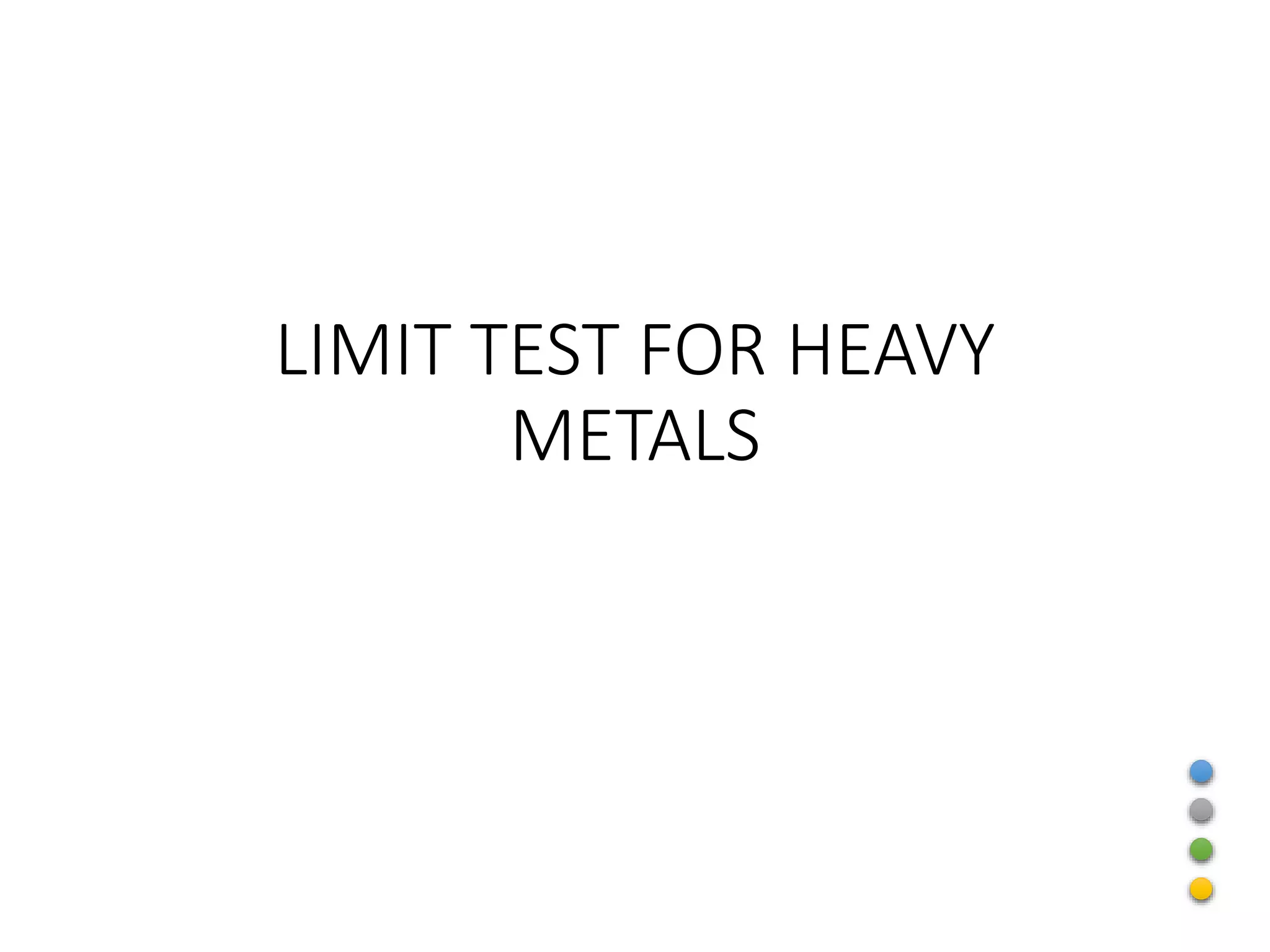The document describes three methods (A, B, and C) for performing a limit test for heavy metals according to the Indian Pharmacopoeia. The test involves reacting heavy metal ions in the sample with hydrogen sulfide or sodium sulfide to form colored heavy metal sulfides. The color produced is compared to that of a standard lead solution to determine whether the sample meets the limit of 20 parts per million for heavy metals. Method A is for clear, colorless solutions, Method B is for solutions that are not clear or colorless, and Method C uses sodium hydroxide for solutions that give a clear colorless solution in sodium hydroxide.






